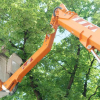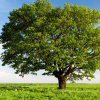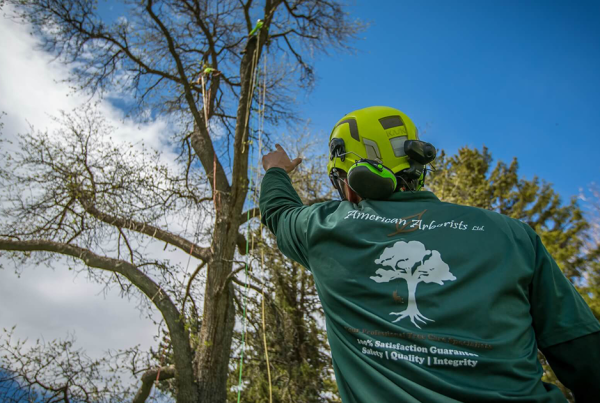
Strong wind gusts, snow, and ice brought about by harsh winter storms can cause limbs and branches of trees to break. In some cases, these may result to a tree falling over. This is just one of the main challenges a tree faces during winter.
As a tree owner, how you deal with the winter stress on trees and shrubs has a significant impact on its recovery and overall health in the coming seasons. Here are a few useful tips to keep in mind when dealing with the different stresses faced by your trees and shrubs:
1. Tree branches and shrubs get weighed down by the accumulation of heavy snow and ice.
As soon as the winter is over and the warmth of spring starts to creep in, you will often find trees and shrubs in your property covered in heavy snow and ice. This can result in the branches bending downward due to the sheer weight of the snow.
What you should do
If the snow is loose enough, you can try sweeping it upward. This is important. Always sweep upward. If you sweep from the top down, you run a risk of breaking even more branches just by doing it wrong. At this point, the branches are weakened enough as it is; don’t add more stress to them.
Here’s more
If the snow has turned into ice and is stuck onto the branches, sweeping it is pointless. It won’t dislodge no matter what you do. You’ll only be adding more damage to the plant. The best thing to do in this situation is to wait for the snow and ice to melt naturally.
2. Young and recently planted trees may topple due to strong snowstorms and wind gusts.
Young, recently planted trees are the most vulnerable come winter time. Their root systems are not yet fully established underground and could easily dry out or freeze over on subzero temperatures. And because young and recently planted trees still do not have a solid foothold, a strong gust of wind could cause them to get uprooted and fall over.
What you should do
When the subfreezing temperatures of winter begin knocking at the door, you should make sure to cover any roots that are exposed as soon as possible. By using winter mulch, you might be able to keep the root system of your trees from drying out or freezing over. Just make sure to practice proper mulch application.
Tree removal as a last resort
Tree removal may be the only option for mature trees, or trees with trunks more than 10-12 inches in diameter, that have fallen over. Moreover, trees that are partially uprooted and have more than a third of their roots exposed are most likely beyond any help. Of course, professional help may be necessary to properly assess the condition of the tree.
3. Some species of trees are weak-wooded and can be easily damaged by wind and the sheer weight of snow and ice.
There are species of trees that are faster growers and have soft wood, also known as weak-wooded trees. Some examples are lacebark elm, Leyland cypress, silver maple, Bradford pear, purple robe locust, scot pine and green ash. These trees are vulnerable to damage in areas that experience extreme winters and strong storm winds.
What you should do
The best solution for this kind of problem is to avoid planting these types of trees in areas prone to harsh winters and strong rainstorms. If you really want these trees in your property, however, make sure to plant them away from structures to minimize potential damage.
Additional Tips for Dealing with Winter Damage on Trees
- Be patient with trees and shrubs covered in snow and ice. If they can’t
be dislodged by sweeping, wait for the ice and snow to melt naturally. - Avoid shaking a tree or shrub to remove snow and ice. You’ll be causing more damage to the already stressed-out plant.
- Once the snow and ice has melted away, take a moment to assess the condition of the tree or shrub to determine the best solution to address potential damage.
- When pruning trees and shrubs, make sure to observe best practices to ensure the health and integrity of the plant.
- Hire a Certified Arborist to help you assess the situation and provide effective solutions.









